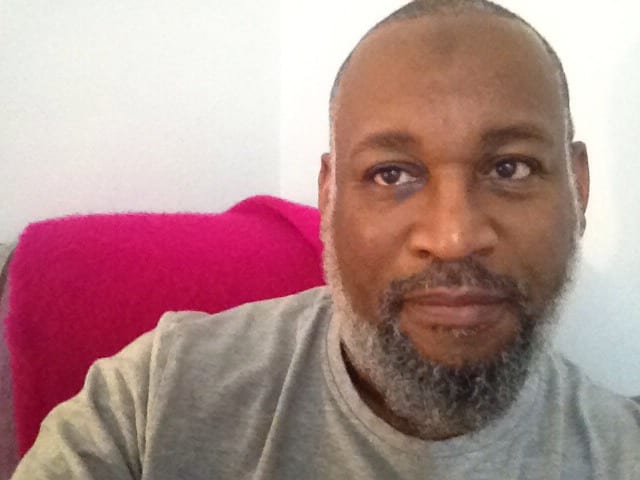The events unfolding in Sudan are unprecedented. Tens of thousands of protestors have gathered for a fourth consecutive day outside the Armed Forces headquarters in the capital Khartoum demanding the removal of President Omar Al-Bashir.
For the second night, attempts by the police and security forces to disperse protestors staging a sit-in outside the building have been foiled by naval and air force troops engaging in prolonged gun battles with the police, resulting in scores of casualties. An updated number of casualties has not been released yet, but on Monday Interior Minister Bishara Jumma told parliament that seven people had died in the preceding 48 hours.
In a video posted on social media, Sudanese marines are seen clearly providing cover to crowds gathered inside the HQ building’s courtyard. The events fly in the face of the official government claim that the security and armed forces are united.
This response came hours after one of the leaders of the groups taking part in the protests, the Sudan Congress Party, said that they will continue. Omar Al-Digar added that a committee is being formed for direct talks with the army to bring about an interim government and pave the way for elections. Quite how the SCP’s demands will be met is unclear; the head of the army remains the State President, the very man who protestors wish to see removed. Any covert or open discussion with protestors would undoubtedly be a non-starter.
READ: Sudan soldiers intervened to protect demonstrators from Armed Forces
However, insiders are fully aware that disagreements and divisions between the armed forces and their security peers are nothing new. Army officers have long viewed the security forces as “rebellious insubordinates” overrated by the government for political reasons. Security and intelligence agencies under Al-Bashir’s government have always been able to capitalise on lucrative business and employment opportunities whilst working for the state, whereas troops tend to struggle to make ends meet. There a sense that despite the sacrifices made to defend the nation, the armed forces’ rank and file have been marginalised.
On Friday, the army’s central command issued instructions to the heads of the security and intelligence agencies, as well as the police, not to intervene or move their personnel within the area adjoining the perimeter of the army base where the clashes took place. Sources say that the head of the security forces, Salah Abdullah Gosh, was angered by this but, given the chain of command, could do nothing.
Saturday saw crowds gathering in one part of the city en route to the army HQ building being stopped by security and police forces and then using a diversion plan to avoid the obstruction. Live video feeds were shared on Facebook which allowed protestors to synchronise their movements and enter the area from every direction.The subsequent momentous events unfolded on the 6 April anniversary of the fall of former President Jaafar Nimeiry’s government in 1985. Widespread support from Sudanese expatriate groups across the world marked a turning point in the latest protests. For days beforehand, videos circulated from those whom the protestors call “electronic chickens” — groups of online bloggers loyal to President Al-Bashir — spinning, in the protest movement’s opinion, government propaganda, falsehoods and inaccuracies.
According to one of Sudan’s prominent media moguls, Hasan Kogali, the protestors were using a hundred or so activists to stage “video social media protests” in different areas of the capital to create the illusion of ongoing mass protests when, he alleged, the protest movement was “almost dead”.
READ: Sudan police disperse ‘illegal gatherings’
Government supporters have been quick to label the protests as a “communist, secularist” movement wishing to sow discord and harm the moral fabric of Sudanese society. They are painted out to be the difference between following traditional core Islamic Sudanese values and abandoning such values for a liberal society open to moral corruption.
The battle is taking place in two quite separate arenas. For the vast majority of young Sudanese, the narrative is filtered over social media via videos, blogs, lectures and songs of revolutionary protest. For the older generations, ministerial and parliamentary statements, national news radio and television broadcasts, and local Sudanese satellite channels are the sources relied upon for shaping opinions. Usually, it must be said, such channels generally ignore news about the continuing protests. For example, Monday’s Sharooq Channel’s news bulletins said that the protestors were demanding “political and economic changes,” rather than the complete removal of President Omar Al-Bashir and his government. Whilst not an entirely untrue statement, the lack of objective context pushed on both sides is leading to a hardening of views and a polarisation of society.
Equally as damaging is the disruption being caused to everyday life in Sudan. The severe economic crisis could be a blessing or a curse for the protest movement. The anger of the security forces and the drive to stop the protests are driven by the growing concern about the damage being caused to the economy. Last week, despite new fiscal measures taken by the government, the annual inflation rate topped 114 per cent and the Sudanese currency continued to weaken.
One way or another, there is no doubt that the end of the protests will hinge upon the extent to which Sudan continues to function as a country. Despite the divisions in the defence forces and growing support for the protest movement, Sudan remains as close as it ever has been to some sort of change. It is unclear, however, whether that change when it happens will please or frustrate the protestors.
The views expressed in this article belong to the author and do not necessarily reflect the editorial policy of Middle East Monitor.


![Sudanese protestors demand the resignation of Sudanese President Omar Al-Bashir, in Khartoum, Sudan on 7 April 2019 [Stringer/Anadolu Agency]](https://i0.wp.com/www.middleeastmonitor.com/wp-content/uploads/2019/04/2019_4-8-sudan-protest20190407_2_35864166_43359096.jpg?fit=1200%2C800&ssl=1)

![Image of Sudanese President Omar Al-Bashir [DonellMc/Twitter]](https://i0.wp.com/www.middleeastmonitor.com/wp-content/uploads/2017/02/2017_2_6-Sudanese-President-Omar-Al-Bashir.jpg?resize=1200%2C800&ssl=1)
![Protests in Sudan - Cartoon [Sabaaneh/MiddleEastMonitor]](https://i0.wp.com/www.middleeastmonitor.com/wp-content/uploads/2019/01/m11-1-2019.jpg?resize=933%2C579&ssl=1)








